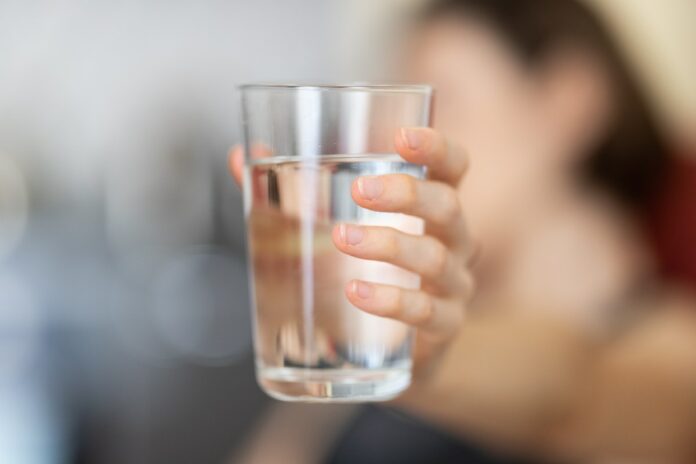Growing up I remember my mom vehemently against drinking tap water. Even when we would fill up the dog bowls with water it strictly had to have been from the filtered fridge spout. This always seemed very bizarre to me, though I never questioned her because I figured “moms know best, right?”. 10 years down the line I sit down to write this article and I discover there is a valid reason for her suspicions. According to writers at Healthline, tap water is never 100% water. There are usually a plethora of minerals and a small amount of contaminants that lie within your water. Even though this may sound concerning, don’t fret too much. These minerals are safe for human consumption for the most part, but there are some places within the continental U.S. where you should be hesitant to ingest the water.
What is commonly found in tap water?
Mineral fluoride is one of the most common additives to tap water. This is the United States’ secret way of promoting good dental hygiene. Mineral fluoride helps your teeth to become stronger as proven by the CDC (Centers for Disease Control and Prevention). They say that mineral fluoride can assist in the prevention of tooth decay up to 25%. Chlorine and chloramine are also added to tap water in order to serve as a disinfectant. These two chemicals ward off any germs that may be hiding within the water. According to the CDC, chlorine levels up to 4 parts per million are safe. Then, there are other minerals in tap water that aid in positive human health. As stated in the Healthline article “… drinking a quart of tap water provides you with about 1 percent of your daily required copper, calcium, magnesium, and sodium”. Some other minerals that you can find in tap water that are good for you are: potassium, iron, phosphorus, and zinc.
What Is Unsafe in Drinking Water?
On the other hand, there are a lot of unsafe components that could be swimming around in your tap water. For example, bacteria and parasites. The likelihood of this being the case is very low, but never say never, right? If E.coli, Cryptosporidium, or Giadira are found within your tap water then your local health advisory will put out a notice for a “boil water advisory”. If this is something that you are notified of, we highly recommend stopping by your local grocery store and picking up a case of water until you are in the clear. Both human-made and natural chemicals can also be detected in tap water. These are harmful to your health, but usually are filtered out before it reaches the tap. Again, better to be aware and safe than unaware and sorry. I believe what scared my sweet mother the most was the threat of our next contender: radioactive elements. This is also why we didn’t have a microwave as I was growing up (boring). When I say radioactive elements we’re talking about heavy stuff like: uranium, cesium, and plutonium. I know, I know I’m bringing you back to the days of dreaded high school chemistry with these words, but in the rare case of a dangerous situation you must beware of the repercussions! There are groups of people that are more vulnerable to these substances than others: infants, young children, pregnant women, those over the age of 65, those undergoing chemotherapy, people with HIV or AIDS, and immunocompromised individuals. So, if there is anyone that lives under your roof within one of those categories it may be best to buy a water filter just in case.
Drinking-Water Regulation
Luckily, the U.S. passed the Safe Drinking Water Act of 1974 to guarantee a basic set of standards that tap water must meet in order to be drinkable. However, there are some states with better tap water than others. Water quality really just boils down to freshness versus outright contamination. Rhode Island finds itself at the top of purest water lists. This is due to their abundance of freshwater resources and the monitoring that ensues in order to make sure it remains the best. South Dakota is especially strict with their tap water standards which makes them sit comfortably at second best. Following is Minnesota with a plethora of grants that fund operations of water training management. Other states that are noted within the top 10 list published by Aquasana are: New Hampshire, Connecticut, Vermont, Kansas, Missouri, Oregon, and Massachusetts.
What state has the worst drinking water?
As stated, we are also going to take a look at some U.S. states with the worst-tasting tap water. Still following the list pasted above, Arizona finds itself taking the number one spot. But how and why does the water taste so poorly? According to recent studies linked in the Aquasana article, Arizonian tap water contains high levels of both chromium-6 and polyfluoroalkyl substances. If this doesn’t sound very good, well, that is because it’s not. California comes in second place with arsenic, uranium, and nitrates infiltrating their water systems. Ohio takes third place due to their concentration of industrial centers causing large amounts of led to be found within the tap water. The other places on this list are: Washington, Puerto Rico, Georgia, New Jersey, Pennsylvania, Florida, and Texas.
If you find yourself in a state with poor-quality tap water it is best not to take any risks. Sure, there are many members of these communities that come out unscathed, but it is important to note all feasible precautions when visiting/moving. Just remember my mom’s voice in the back of your head the next time you go to fill your glass with tap water – “Take it from the fridge instead”.
Carly is a freelance writer with interest in topics pertaining to lifestyle blogging, social justice, and anything to do with film/media. She graduated from the University of Wisconsin - Madison with a degree in English & Literary studies in hopes to write for a large music publication. When she is not writing, you can find her watching movies, cooking her famous Carbonara, and enjoying time outdoors.



